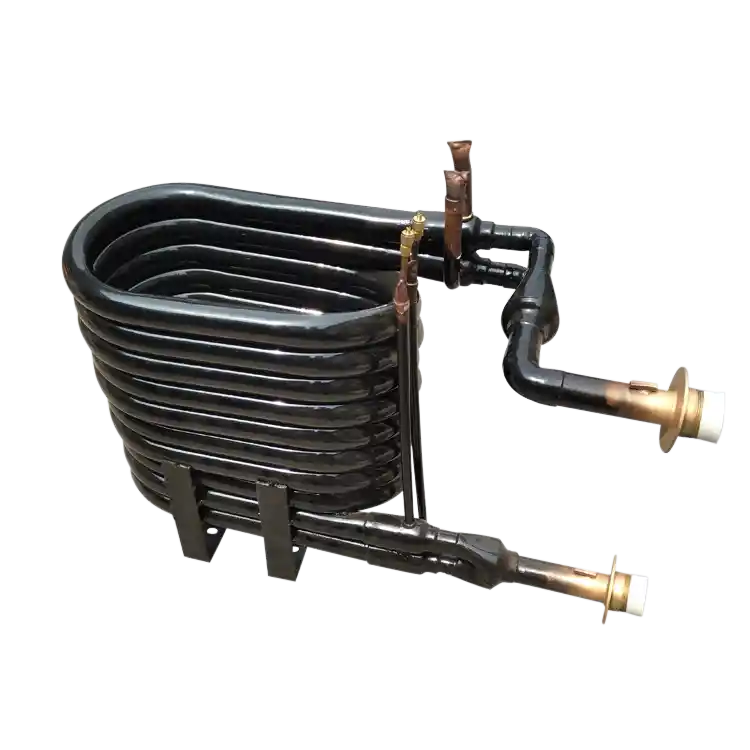Introduction
In this article, we will explore the application of coaxial heat exchangers in the power generation industry. Coaxial heat exchangers play a crucial role in optimizing heat transfer, improving energy efficiency, and enhancing overall performance in various power generation systems. Let’s delve into the different applications and benefits of coaxial heat exchangers in this sector.
1. Overview of Power Generation
Power generation involves the production of electrical energy from various sources, such as fossil fuels, nuclear energy, renewable resources, and more. Coaxial heat exchangers offer significant advantages in power generation systems by efficiently transferring heat, managing temperatures, and maximizing energy utilization.
1.1 Importance of Heat Transfer in Power Generation
Efficient heat transfer is essential in power generation processes to ensure optimal operation, reduce energy losses, and enhance overall system efficiency. Coaxial heat exchangers provide effective heat transfer solutions, enabling power plants to extract and utilize heat effectively.
1.2 Role of Coaxial Heat Exchangers in Power Generation
Coaxial heat exchangers offer several benefits in power generation applications, including:
| Benefits | Descripción |
|---|---|
| Enhanced Heat Transfer | Coaxial heat exchangers facilitate efficient heat transfer, improving energy conversion rates. |
| Temperature Management | Precise temperature control is achieved through coaxial heat exchangers, ensuring system stability and performance. |
| Condensation Prevention | Coaxial heat exchangers assist in preventing unwanted condensation, ensuring optimal power generation efficiency. |
| Compact Design | The compact design of coaxial heat exchangers allows for efficient space utilization in power plants and installations. |
| Corrosion Resistance | Coaxial heat exchangers are designed with materials resistant to corrosion, suitable for demanding power generation environments. |
2. Applications of Coaxial Heat Exchangers in Power Generation
Coaxial heat exchangers find diverse applications in power generation systems, contributing to improved efficiency, reliability, and cost-effectiveness.
2.1 Combined Cycle Power Plants
Coaxial heat exchangers play a crucial role in combined cycle power plants, where both gas turbines and steam turbines are utilized. They facilitate heat recovery from exhaust gases and transfer it to the steam cycle, increasing overall plant efficiency.
2.2 Nuclear Power Plants
In nuclear power plants, coaxial heat exchangers are employed for condenser cooling and steam generation. They effectively transfer heat from the reactor’s coolant to produce high-pressure steam, which drives turbines to generate electricity.
2.3 Thermal Power Plants
Thermal power plants, using fossil fuels such as coal or natural gas, can benefit from coaxial heat exchangers in various applications. These include boiler feedwater heating, air preheating, and condenser cooling, where efficient heat transfer is crucial for optimizing energy conversion and reducing emissions.
2.4 Renewable Energy Systems
Coaxial heat exchangers play a role in renewable energy systems, such as concentrated solar power (CSP) plants and geothermal power plants. They enable efficient heat transfer between the working fluid and the heat source, contributing to the overall effectiveness of these renewable energy systems.
2.5 Waste Heat Recovery
Coaxial heat exchangers are employed in waste heat recovery systems, where they extract heat from industrial processes or exhaust gases and transfer it to a useful medium, such as water or air. This enables the recovery and utilization of waste heat, increasing overall energy efficiency.
Conclusion
Coaxial heat exchangers have significant applications in the power generation industry, enhancing efficiency, heat transfer, and temperature management. Their versatile design, corrosion resistance, and compact size make them suitable for various power generation systems, ranging from combined cycle power plants to nuclear and thermal power plants. By leveraging the benefits of coaxial heat exchangers, the power generation sector can achieve improved energy utilization, reduced environmental impact, and enhanced operational performance.


